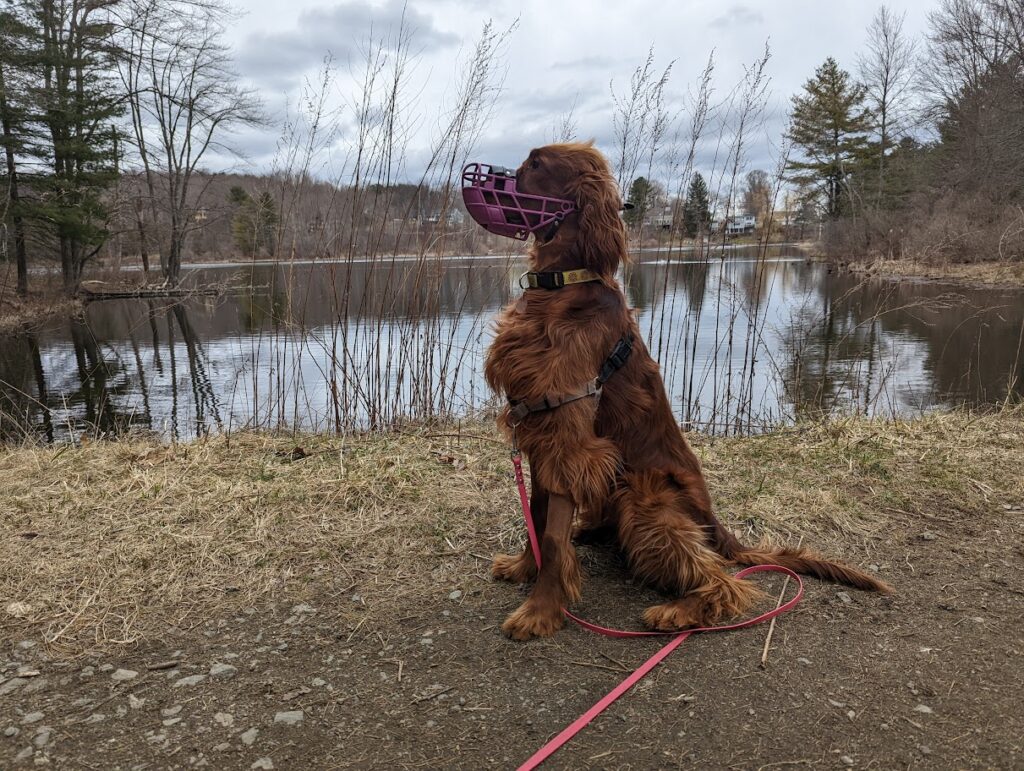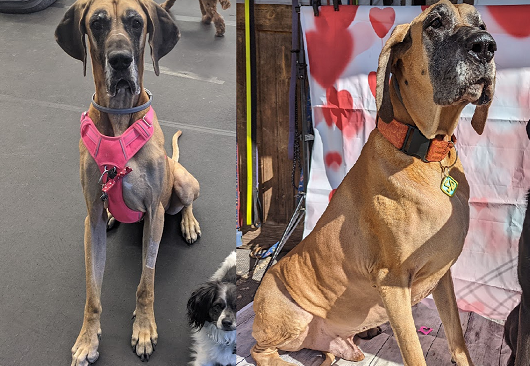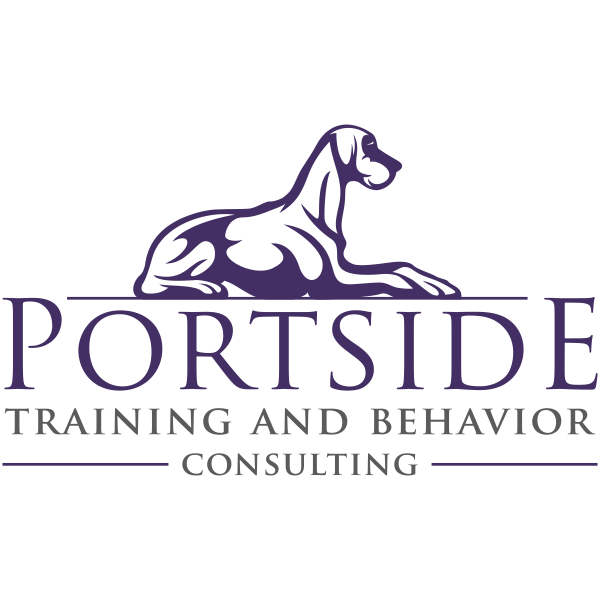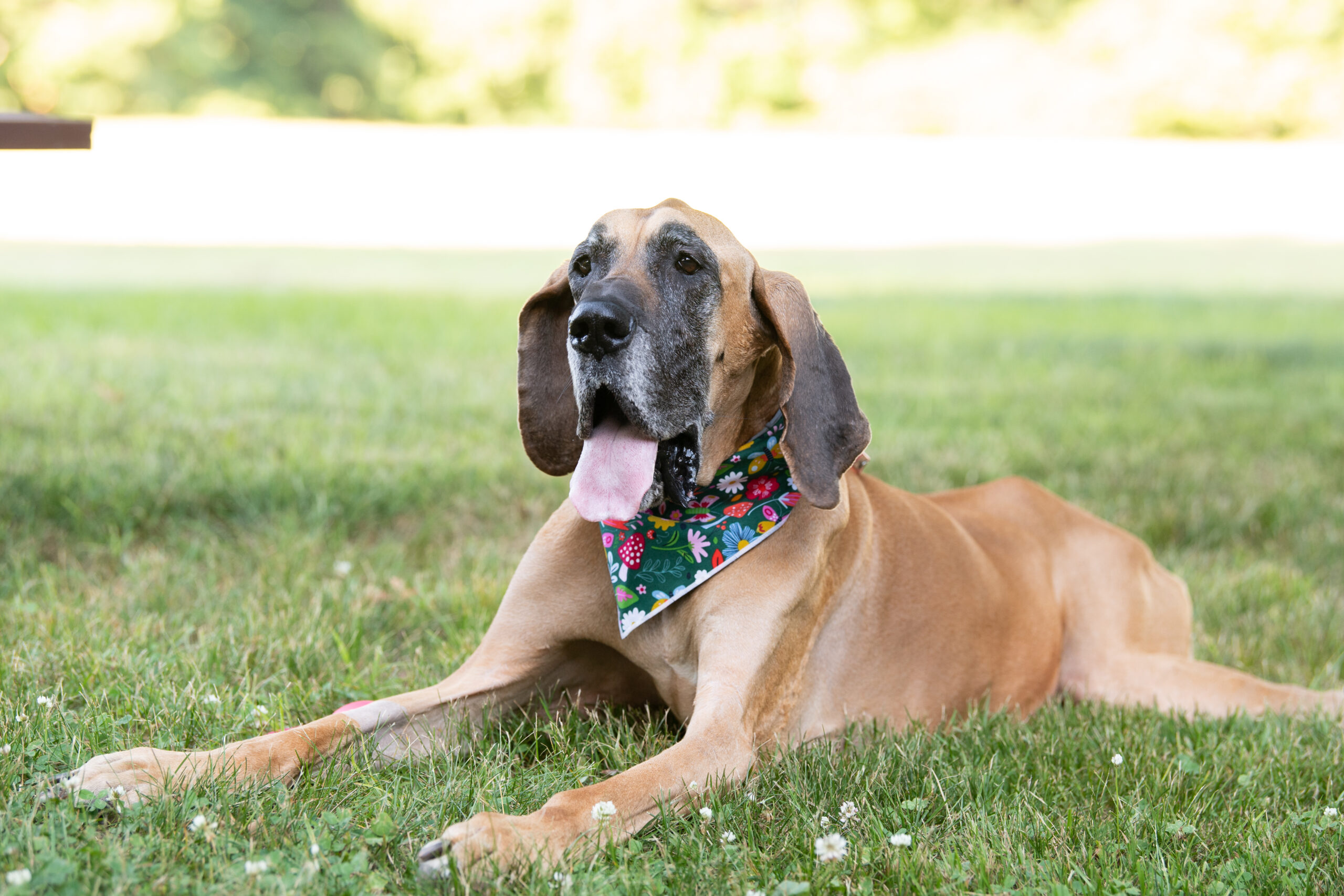“Go talk to your vet” is a phrase commonly attributed to every good dog trainer and behavior professional. This might sound like strange advice if you are having a behavior issue. Obviously, a dog trainer should be able to help me through a behavior problem. Well like everything, it is never that simple. Health and wellness are the very first thing we need to evaluate when we see a new behavior arise. In this, we are going to talk about what that is, and something called the Humane Hierarchy.

Most professions have a foundational ethic that guides the craft. Accountants are bound to be fiduciaries, lawyers are bound to advocate for their clients, and doctors are bound to do no harm. Now I don’t want to imply that my career has the same level of gravity as a doctor, but we are also bound to a core ethical principle. All of our training methods must be the least intrusive, and minimally aversive (LIMA). LIMA is an ethical framework that guides how dog trainers approach skill-building and behavior modification. Let’s break LIMA into its core components. Least intrusive, is to have the lightest possible touch. We discussed this idea in Compliance, we don’t want to be autocrats demanding every moment from our dogs, we want to be gentle guides. The dog is the one who should be making choices and decisions, not us, and we should be responding positively to the ones we like. Minimally aversive, is to say we use the least amount of punishment or negative stimulus possible. This is just another way to say, we want to avoid punishment as much as humanly possible, it doesn’t matter how many tools they say they have. Together, these two ideas form an ethic that is informed by science and empathy. To boil away all the baggage, LIMA as a principle is taking the most hands-off approach to dog training.
Now how does this apply to the question at hand? Now that we know what LIMA is, we can now talk about how this applies to the Humane Hierarchy. The Humane Hierarchy is essentially a flowchart, that goes from the most LIMA approach to the least LIMA approach. I am going to start from the bottom and work our way up. The very last stop, the end of the line of the Humane Hierarchy is positive punishment (P+). This is applying tools like shaking a bottle of coins, or a choke chain. I can already hear the keyboards going off, “But Matt in every article you talk about how bad these tools are!” Good to know I have that level of engagement. Yes, these tools are bad and should be avoided. While technically yes LIMA and the Humane Hierarchy are permissive of these tools, that doesn’t mean they should be used…ever. Applying P+ is a last resort, this means you have literally tried everything and failed. This doesn’t mean you gave your dog 2 cookies and it didn’t work so time to bring out the E-collar. This doesn’t mean you put up the blinds but your dog still barks at people going by. This means, you have talked to a veterinarian, get a second opinion, go to a veterinary behaviorist, talked to a certified behavior consultant, tried a behavior modification plan, tried a second behavior modification plan, tried differential reinforcement, tried a different type of differential reinforcement, tried one level of management, and another… the list goes on. There a million stops on the road before we get to applying P+. From experience, at this point I have worked with well over 100, if not hundreds of dogs, I have yet to meet a single dog who needs P+.
Moving a step up from P+ is extinction (no not the dinosaurs), Negative reinforcement (R-,I have a lot to say about this one) and Negative punishment (P-). These three methods revolve around the idea of removing the reinforcement from a behavior. This level is snatching a draw from the jaws of defeat. Rather than letting a behavior reward itself, such as jumping, we want to remove what makes that behavior worth it. For example, should a dog jump on you, you might turn and walk away. Extinction is removing the reward from a behavior. In this dog jumping example, turning and walking away removes you as the reward for the dog. In this scenario, we want to take away the thing that makes jumping worth doing. P- is similar, where we remove the dog’s access. Where P+ is adding something nasty, P- is removing something good. The classic example of P- is putting the dog into time out. Finally, R- is taking away something nasty, if a dog pulls on the leash, the choke chain will add that pressure to their neck (P+) and the relief from that pressure is R-. I do want to take a short detour and talk about R-. R- in my opinion, is the worst form of training. The reason is that the way we need to apply R- is to get the dog into a state of mind of escape. We have introduced something aversive, and the only way to seek relief is to fix their mistake. It is like being strangled, and the “reward” is to be able to breathe correctly. This is one of the areas I do actually disagree with the Humane Hierarchy, R- in my opinion should be an utter last resort and realistically never actually reached.
The next step up is Differential reinforcement. This is a topic that is very dense. Acronyms abound with complicated training theories. I don’t want to go into too much detail or risk turning this into an even more long-winded rant. Differential reinforcement at its core is the idea of rewarding a certain behavior rather than another. The way I try to think of differential reinforcement is to examine behaviors in conflict with one another, and our job as a trainer/guardians is to tip the scale in the favor of the behaviors we want to see. In practice this isn’t as complicated as it is on paper, this is something you do every day without even realizing it. Every time we reward our dog for sitting or going to their mat instead of jumping, that is differential reinforcement of other (DRO). We reward our dog for grabbing a toy instead of barking, which is differential reinforcement of incompatible (DRI). When we reward our dog for just stalking the cat, rather than full-on chasing them that is differential reinforcement of alternative (DRA). When we reward our dog for that picture-perfect textbook leash walking through town, that is differential reinforcement of excellent (DRE). Studying this one is a pain, but is one of the beautiful parts of living with a dog is that this comes naturally as we learn what we need from our dogs, and what they need from us.
The next step up is Positive Reinforcement (R+). Now you might be thinking what the heck is the difference between R+ and differential reinforcement? In theory, a whole lot, in practice, not too much. Positive reinforcement is just rewarding dogs for making good choices. You put your butt on the ground when I asked for a sit? Boom that’s a treat! You waited for me politely when I grabbed your leash? Boom now we go for a nice walk! This is as simple as rewarding your dogs for making decisions or following cues. The difference between this and differential reinforcement is we are not focusing on the conflict between two behaviors, just emphasizing one. When we apply differential reinforcement we are actively trying to eliminate one behavior from your dog’s repertoire, with R+ we are just trying to add to their toolbox.
Almost done and almost coming full circle to answering the original question. Antecedent Arrangements (management), is the idea of making changes in the environment to not allow for certain behaviors to even arise. Antecedents are the stage in which your dog performs. A person entering stage left is the antecedent for your very excitable doodle to jump all over them. A dog entering the stage right on leash is the antecedent for your reactive Great Dane, to bark at them. This is just the fun jargon for whatever leads to your dog’s behavior. We call this management because we are trying to ensure that the behavior doesn’t happen. So as that person walks in the door, maybe your doodle is in a crate, behind a baby gate, or in another room. This prevents that rush of excitement to lead to jumping. As that dog shows up, we could distract them with a treat, or maybe we don’t go walking at 3 pm when everyone is picking up their kids from school. Management is important, especially for certain behaviors, and many times just preventing them from engaging with that trigger is enough. The advice I give to almost all clients with reactive dogs is to shut the blinds. It works well enough for a surprising amount of people.
Ok, we are finally here health and wellness. This is our very first stop when we want to engage with a new behavior popping up. Think about a time when you just had a rough day, I would probably venture to guess either, you didn’t sleep well, didn’t have coffee, or were feeling sick. This is because health, wellness, and nutrition are so vitally important to how we behave, and like us, play a monumental role in how our dogs offer behaviors as well. Speaking specifically from a place of working with aggressive dogs, there are two very common themes among my aggression cases. The first is fear, the dog has something going on in their head that makes some aspect of the world feel super scary. Their emotional wellness is not where it should be. The second is underlying pain. When we are hurt we are much more likely to lash out, we might kick the car we just jammed our finger in, or swear at the step we just tripped over. Dogs when feeling pain are much more likely to lash out and use their teeth in the same way.

Stringing this all together, notice how each of these steps going upwards requires less and less from us. Like LIMA guides we want to take an approach that emphasizes the dog’s well-being and agency. This approach means we are least likely to harm the dog. You don’t need to spend a bunch of time money and effort working on behavior work if a trip to the vet will help realize there is something else going on. Reality is rarely ever so straightforward, odds are if your dog is showing signs of aggression due to an underlying health issue, the best path forward will pull from the health side, and from the behavior side. So often the health world and behavior world seem to be in conflict when at the end of the day our goals are completely aligned. As a trainer, I want to make sure your dog is living a happy, healthy, and fulfilled life, your vet, and team of vet techs, also want the same thing. There are times when we will disagree, especially when it comes to behavioral medicines. But you and your dog will need both of these kinds of professionals in their life. Finding that delicate harmony between the two groups provides for more holistic care for your dog.

